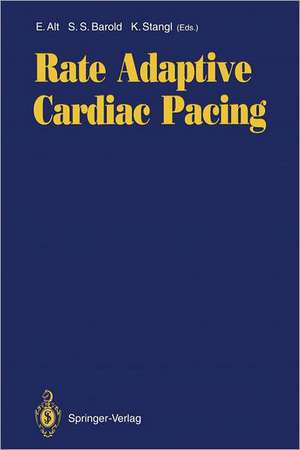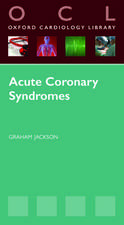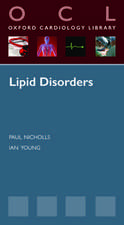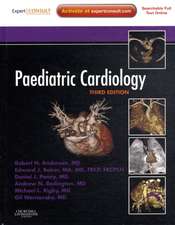Rate Adaptive Cardiac Pacing
Editat de Eckhard Alt, S. Serge Barold, Karl Stanglen Limba Engleză Paperback – 21 noi 2011
Preț: 1096.98 lei
Preț vechi: 1154.72 lei
-5% Nou
Puncte Express: 1645
Preț estimativ în valută:
209.90€ • 219.95$ • 173.53£
209.90€ • 219.95$ • 173.53£
Carte tipărită la comandă
Livrare economică 11-25 aprilie
Preluare comenzi: 021 569.72.76
Specificații
ISBN-13: 9783642766510
ISBN-10: 364276651X
Pagini: 348
Ilustrații: XII, 331 p.
Dimensiuni: 155 x 235 x 18 mm
Greutate: 0.49 kg
Ediția:Softcover reprint of the original 1st ed. 1993
Editura: Springer Berlin, Heidelberg
Colecția Springer
Locul publicării:Berlin, Heidelberg, Germany
ISBN-10: 364276651X
Pagini: 348
Ilustrații: XII, 331 p.
Dimensiuni: 155 x 235 x 18 mm
Greutate: 0.49 kg
Ediția:Softcover reprint of the original 1st ed. 1993
Editura: Springer Berlin, Heidelberg
Colecția Springer
Locul publicării:Berlin, Heidelberg, Germany
Public țintă
ResearchDescriere
"Rate Adaptive Cardiac Pacing" provides a comprehensiveoverview of this most advanced form of stimulating the heartby means of cardiac pacemakers that vary the pacing rateaccording to the needs of the patients. The heart rate iscontrolled by one or several sensors that detect variousparameters such as respiration,blood temperature, oxygensaturation, intracardiac pressure, QT interval, strokevolume andbody activity. Besides describing the clinicaland functional characteristics of these various sensors, thebook also gives a clear understanding of hemodynamic aspectsand in particular, all clinical issues of importance such asindications for rate adaptive pacing and selection of theappropriate patients for rate adaptive pacemakers, with manyECG samples. The book also covers new concepts in rateadaptive pacing such as single lead atrial synchronouspacing and the combination of various sensors, which areamong the most recent developments in the field. Withcontributions from the most wellknown experts in the fieldfrom allover the world, this book is the first publicationto cover all the hemodynamic, clinical and technical aspectsof rate adaptive cardiac pacing.
Cuprins
The Evolution of Bradycardia Pacing.- I. Basic Concepts.- Hemodynamics of the Paced Heart.- Chronotropic Incompetence and Natural History of Sick Sinus Syndrome.- The Impact of Exercise Metabolism; Catecholamine Levels and Individual Fitness.- General Characteristics of Sensors Used in Rate-Adaptive Pacing: The Ideal Sensor Open- and Closed-Loop Concept.- Indications for Implanting Rate-Adaptive Cardiac Pacemakers.- II. Clinical and Functional Characteristics of Sensors Used for Rate-Adaptive Pacing.- Activity-Sensing Rate-Adaptive Pacing.- Respiration.- Intracardiac Pressure for Rate-Adaptive Pacing.- Mixed-Venous Oxygen Saturation.- Central Venous Blood Temperature.- The QT Interval.- Closed-Loop Rate-Adaptive Pacemaker Based on the Ventricular Evoked Response.- Impedance-Derived Cardiac Signals: Preejection Interval, Stroke Volume and Ventricular Peak Ejection Rate for Rate-Adaptive Pacing and Antitachyarrhythmia Devices.- Stroke Volume: A Hemodynamic Variable for Rate-Adaptive Pacing.- III. Electrocardiography of Rate-Adaptive Pacemakers.- Electrocardiography of Rate-Adaptive Dual-Chamber (DDDR) Pacemakers: Lower Rate Behavior.- Electrocardiography of Rate-Adaptive Dual-Chamber (DDDR) Pacemakers: Upper Rate Behavior.- IV. Clinical and Practical Aspects of Rate-Adaptive Pacing.- Is Rate-Adaptive Ventricular Pacing Already Obsolete?.- AAI and AAI-R Pacing: Clinical and Technical Aspects.- Follow Up of Patients with Rate-Adaptive Pacemakers.- New Problems with Rate-Adaptive Pacing: Limitations, Adverse Effects, and Interference.- Technical Improvement to be Achieved by the Year 2000: Leads and Connector Technology.- V. New Concepts in Rate-Adaptive Pacing.- Single-Lead Atrial Synchronous Pacing.- Automatic Pacemakers.- Combinations of Parameters.- Future Trends.- Visionary Concepts on Implantable Devices.













